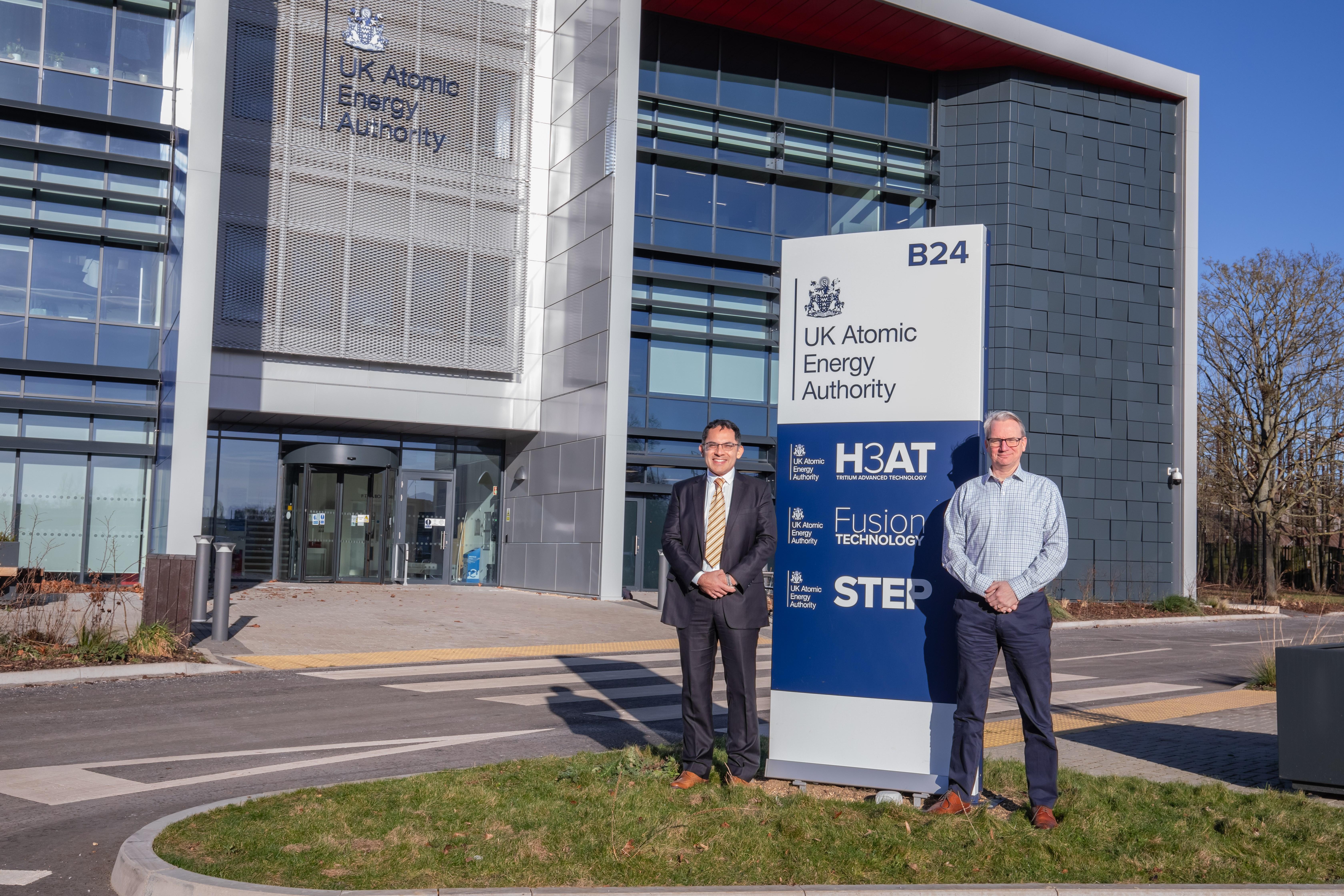UKAEA and CNL announce tritium partnership as UK signs fusion agreement with Canada

THE UK Atomic Energy Authority (UKAEA) and Canadian Nuclear Laboratories (CNL) have announced a partnership to develop technologies related to managing tritium. The announcement comes alongside an agreement between the governments of the UK and Canada to strengthen collaboration in fusion.
Stephen Wheeler, executive director of UKAEA, said: “Fusion energy promises to be a safe, low carbon, and sustainable part of the world’s future energy supply. Tritium is a key fuel for fusion energy, and developing a commercial scale fuel cycle for the handling and reprocessing of tritium is vital to the delivery of fusion as a clean energy source.”
Tritium is a hydrogen isotope that is rare in nature, making efficient management crucial to the commercial viability of fusion. An essential part of isotope management in the fusion fuel cycle involves separating tritium from other isotopes in exhaust gas, so that it can be recycled and reused as fuel.
A key focus of the partnership between UKAEA and CNL will be on the safe removal, processing, and reinjection of fuel into plasma in a continuous manner.
The first project under the partnership will involve analysing samples of candidate materials for isotope separation. This will take place at both CNL facilities in Chalk River, Ontario, and the UKAEA’s facilities at the Culham Campus in Oxfordshire.
Facilities of both organisations will be used for the partnership to advance tritium technologies required for fusion applications, including design of tritium processing plants; development of tritium-compatible materials; tritium breeder blanket technologies used to generate the fuel; tritium decontamination; and analytical equipment and the modelling of handling processes.
In addition to the joint research, the agreed framework will see UKAEA and CNL facilitate personnel secondments, share expertise for consultancy services, and collaborate to provide services to the fusion industry.
International collaboration
The agreement between UKAEA and CNL complements a memorandum of understanding (MoU) on fusion energy signed by the UK and Canadian governments, expected to support worldwide deployment of the technology. The MoU is aimed at enhancing collaboration in key focus areas including research and development, regulatory harmonisation, and skills and workforce development.
It was signed on the sidelines of a ministerial meeting of the International Energy Agency (IEA), attended by the UK’s secretary of state for energy security and net zero, Claire Coutinho. She met with allies to discuss energy security and how to build on progress made in targeting Russia’s energy sector following its invasion of Ukraine.
She said: “A more diverse and secure energy mix will bring down bills in the long-term and that’s why we are working closely with our European allies to end dependency on Russian gas.
“The UK is also leading the world in fusion research, which could provide a near-limitless supply of clean energy. This landmark partnership with Canada will strengthen co-operation between our countries and support our record-breaking British research – bringing us closer to making fusion a reality.”
The partnership supports the UK’s £650m (US$816m) fusion programme, aimed at cementing the country as a world leader in the innovative technology.
It follows an agreement made with the US aimed at making fusion energy commercially viable.
The UK is also working to advance its abilities in nuclear fission, and recently announced a £310m investment in advanced fuel production and skills to bolster energy security.
Fusion and fission are both nuclear processes that create energy by altering atoms. However, fission releases heat energy through the splitting of atoms, and fusion releases energy when atoms are merged. Fusion is cleaner and has a near-unlimited fuel supply.
Recent Editions
Catch up on the latest news, views and jobs from The Chemical Engineer. Below are the four latest issues. View a wider selection of the archive from within the Magazine section of this site.




